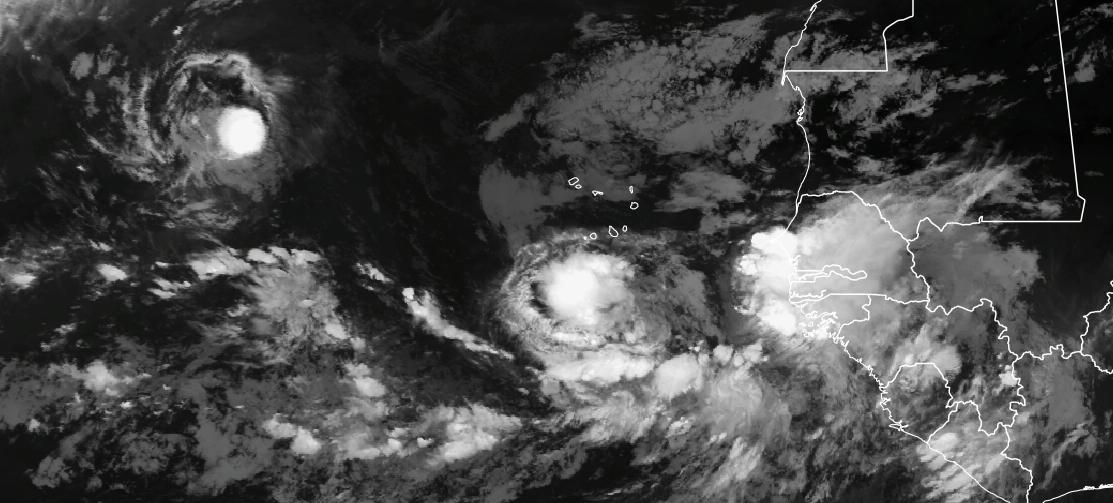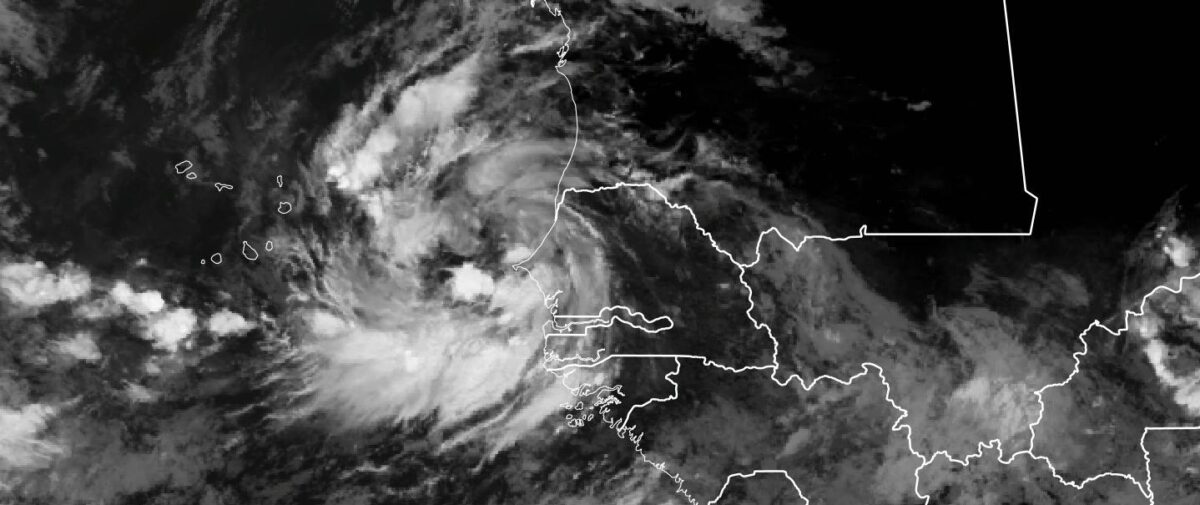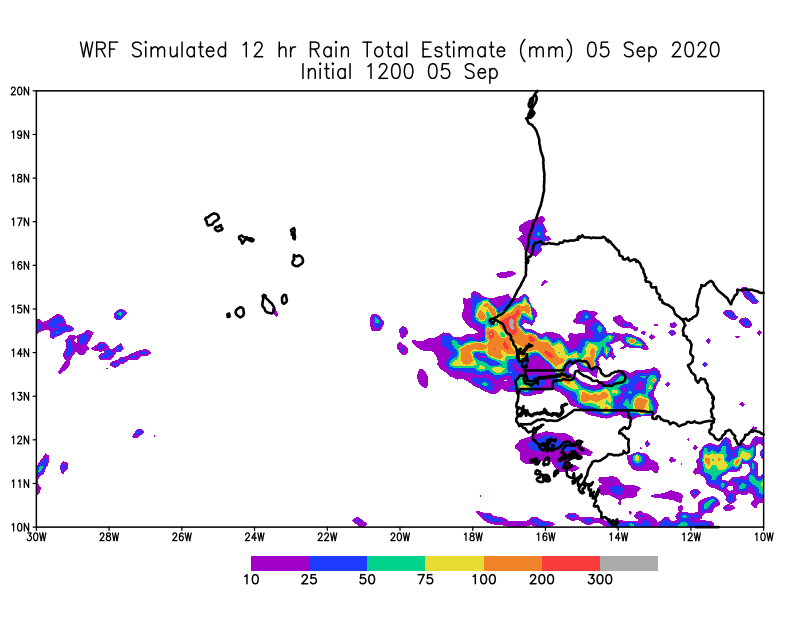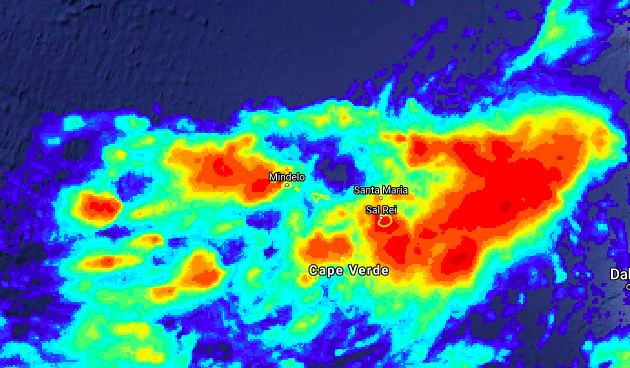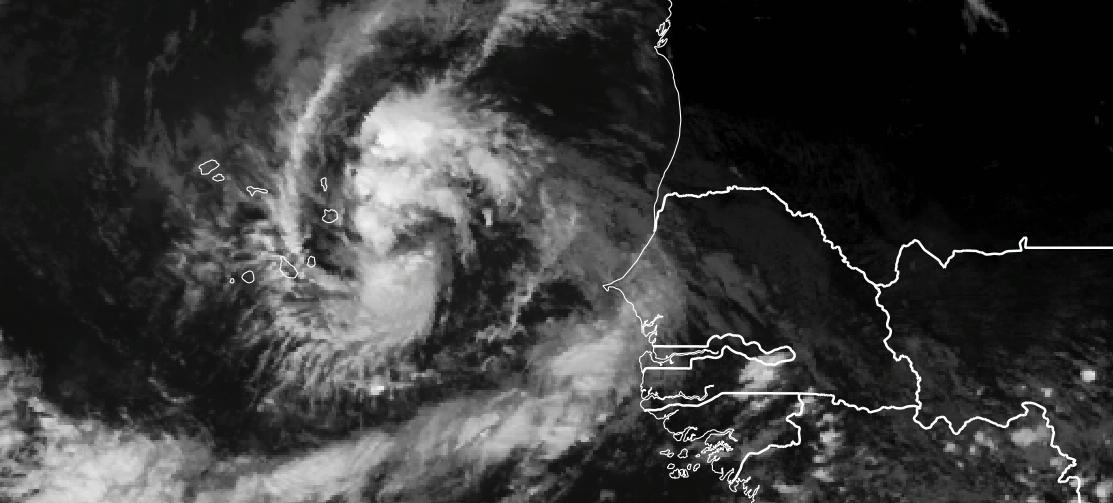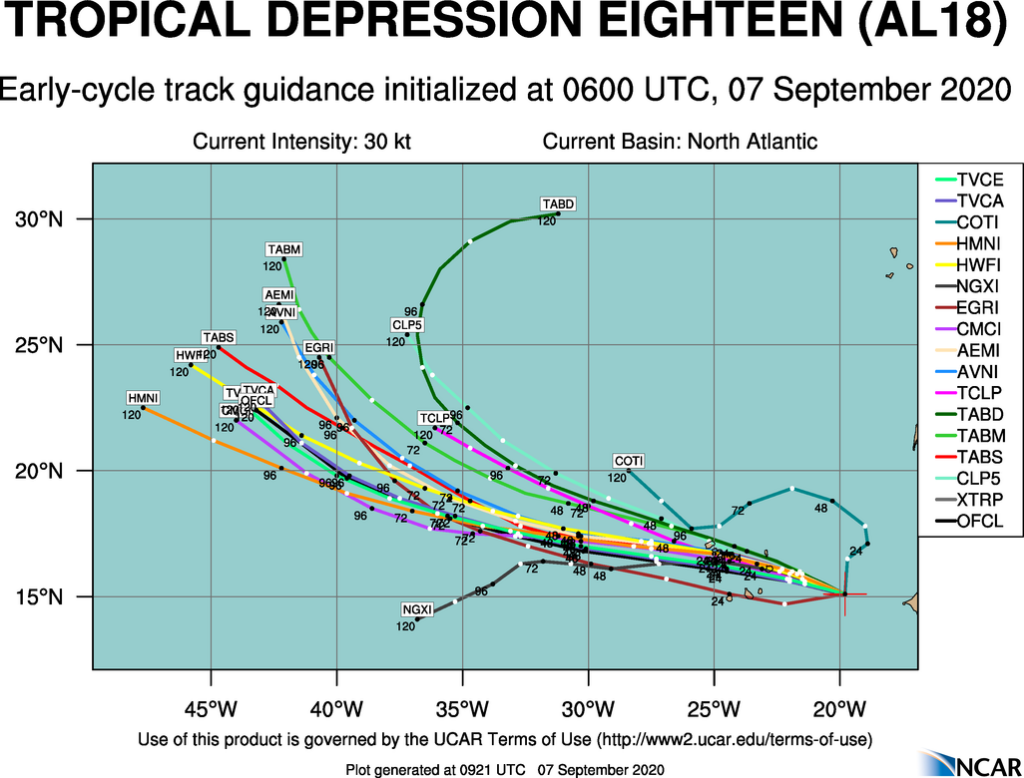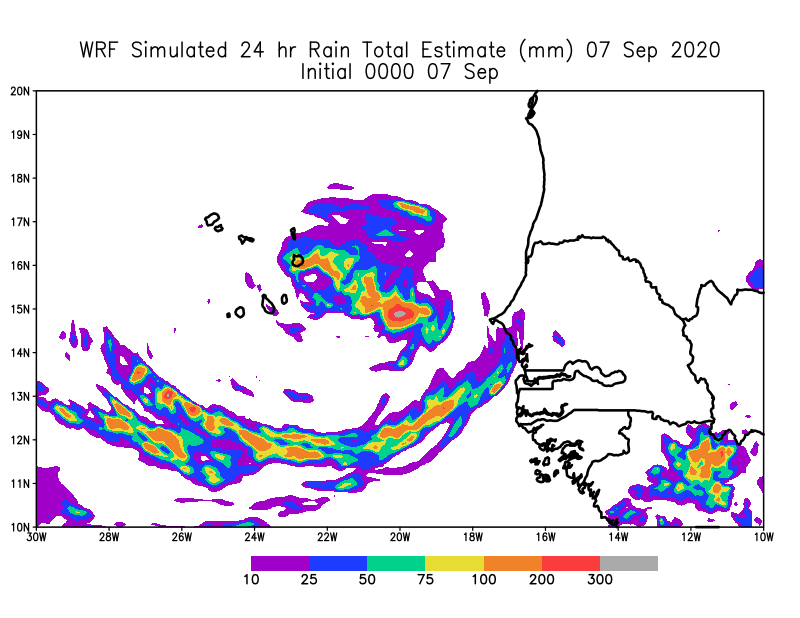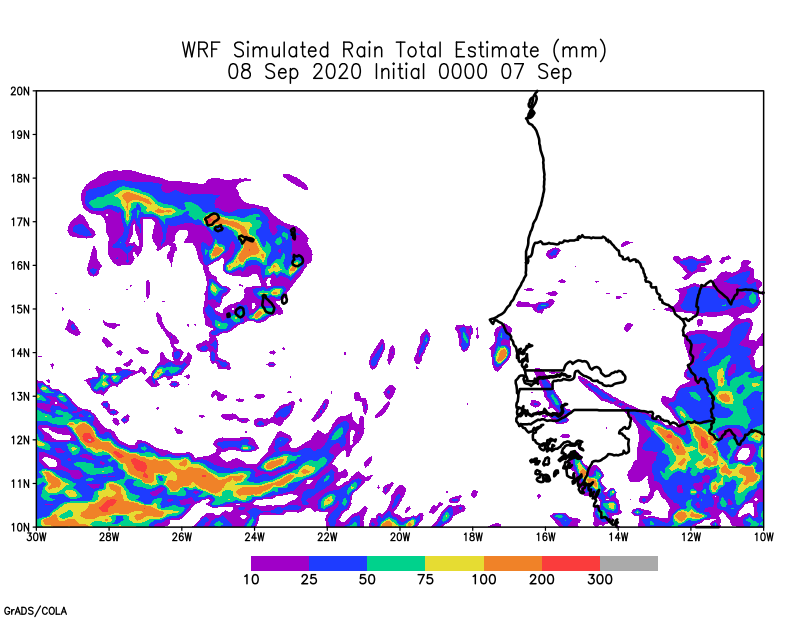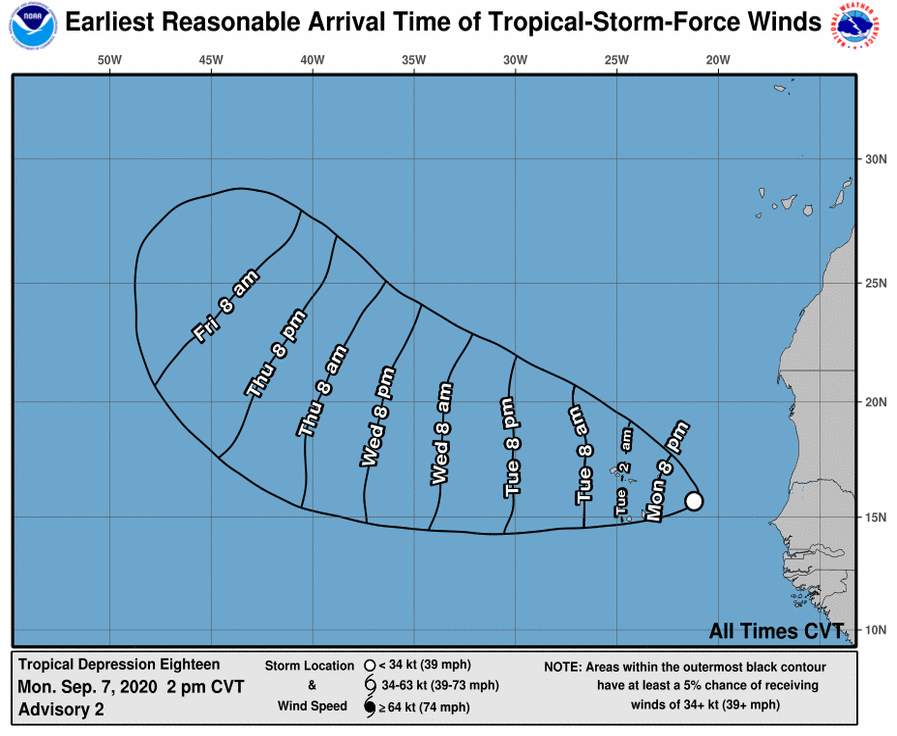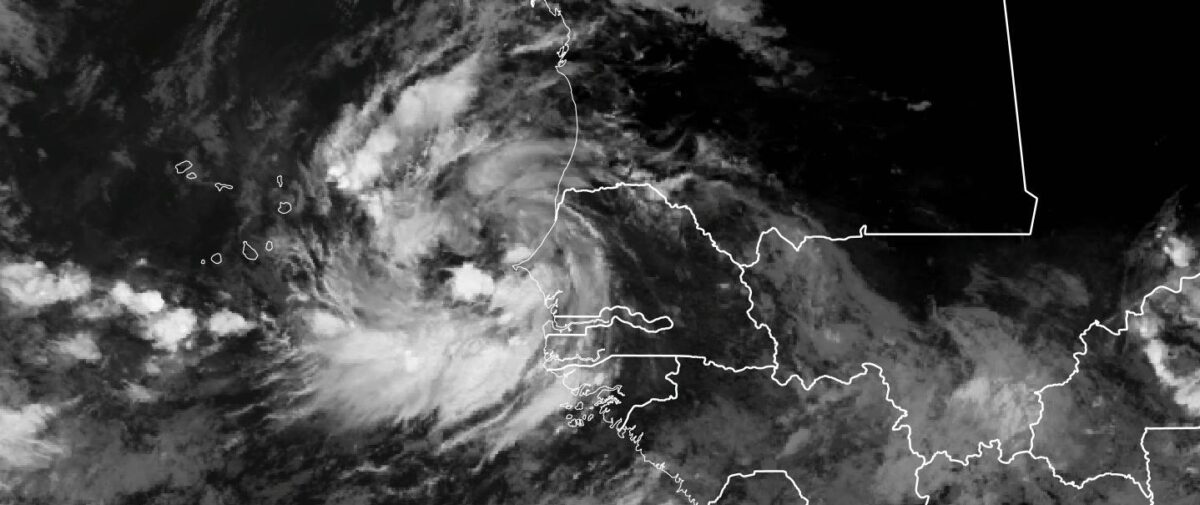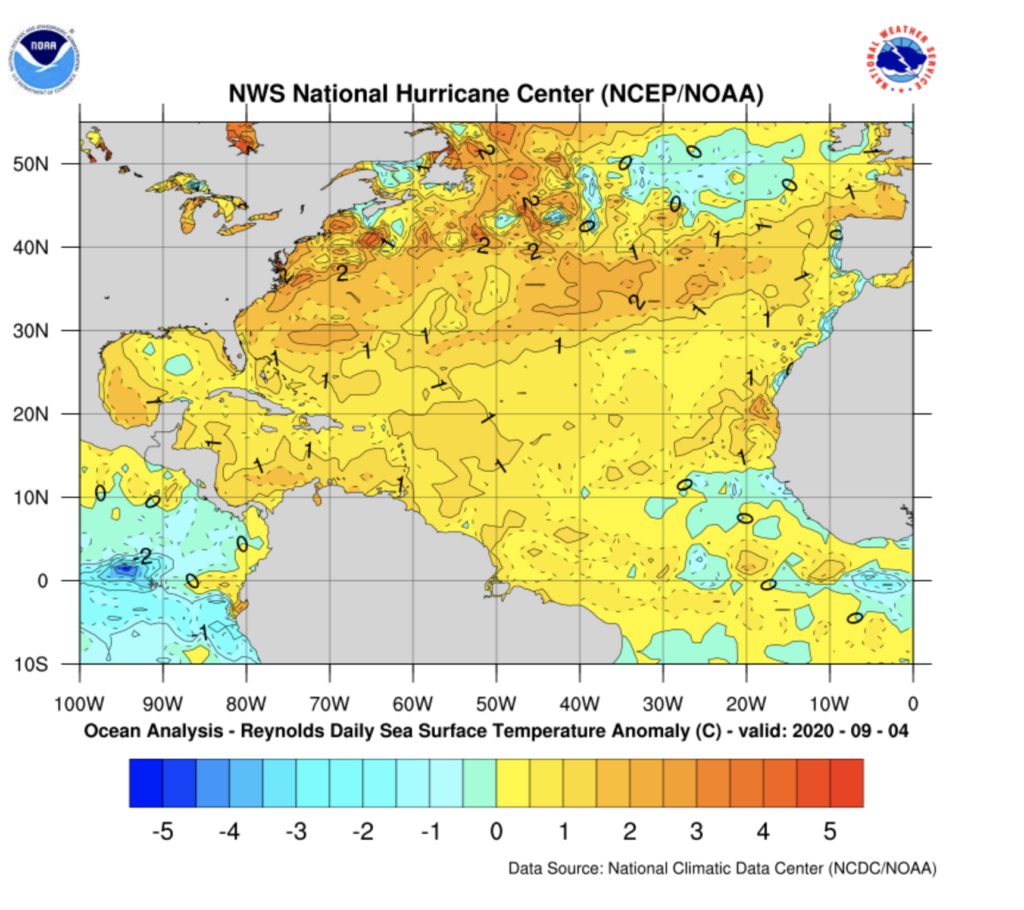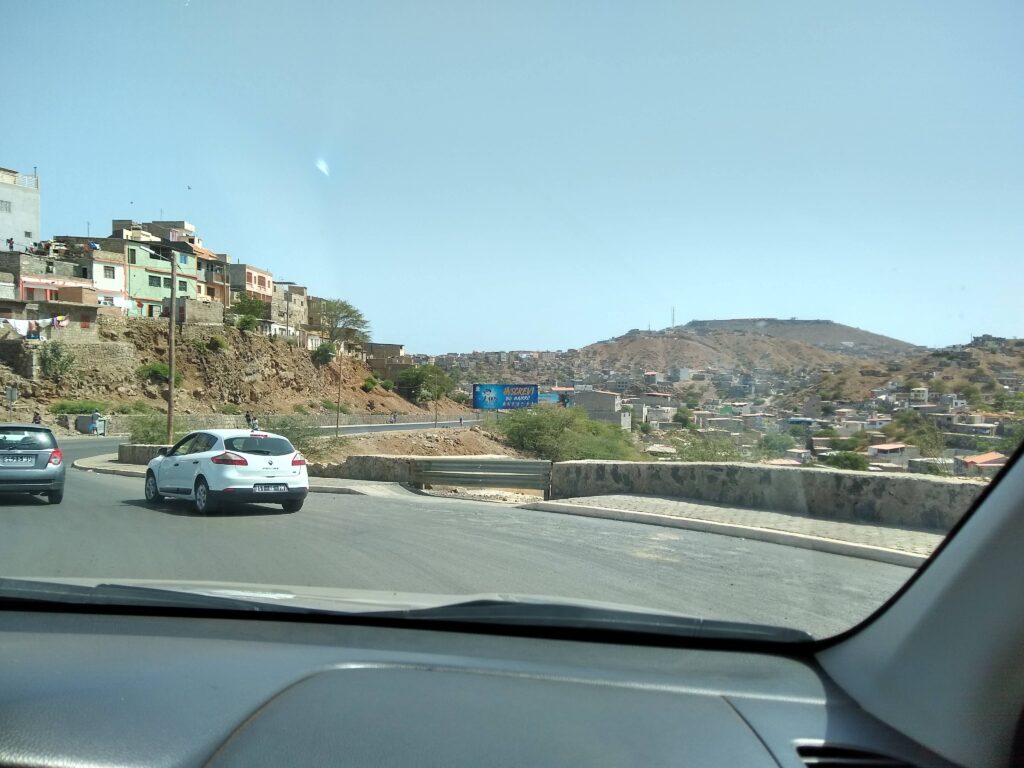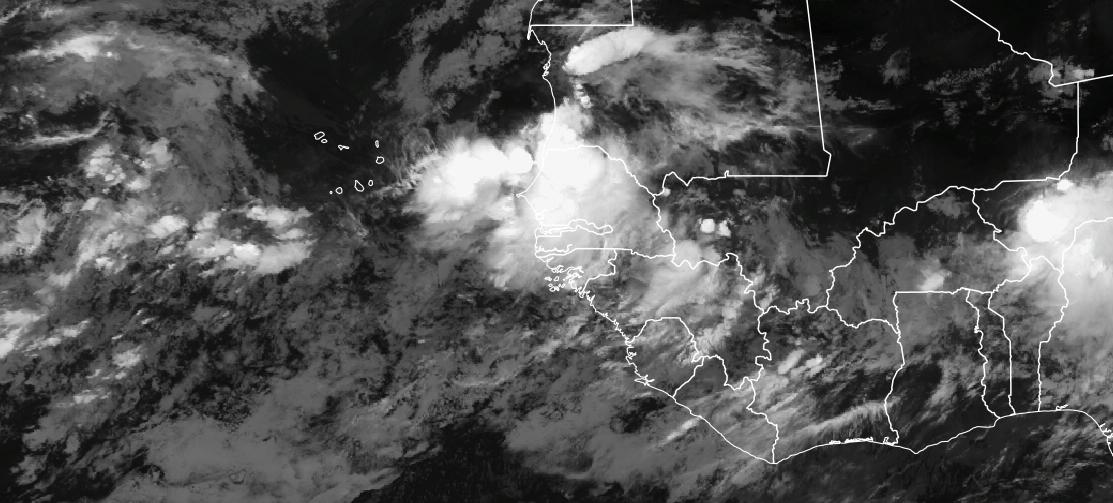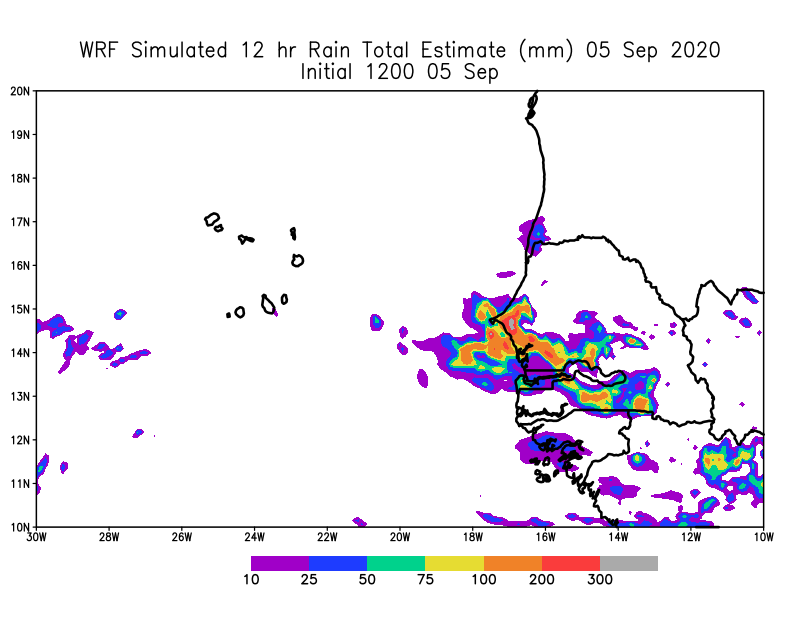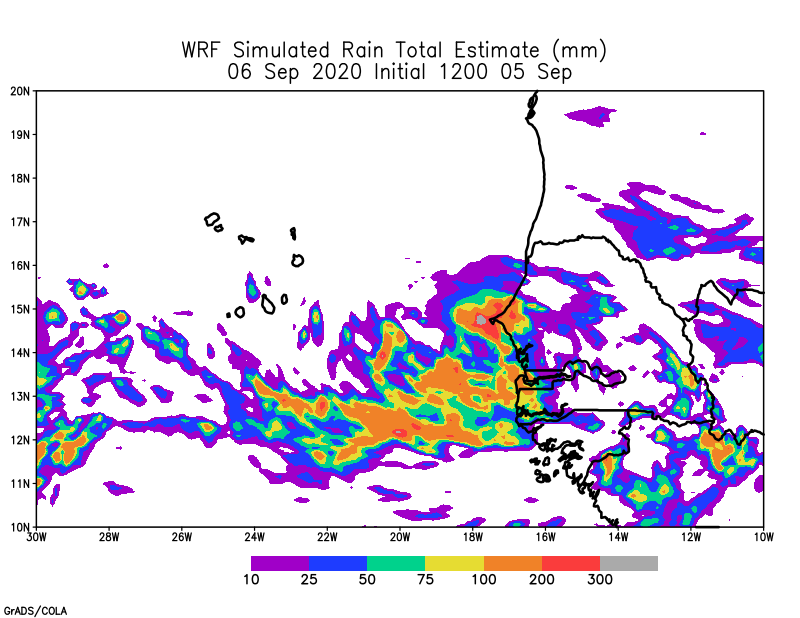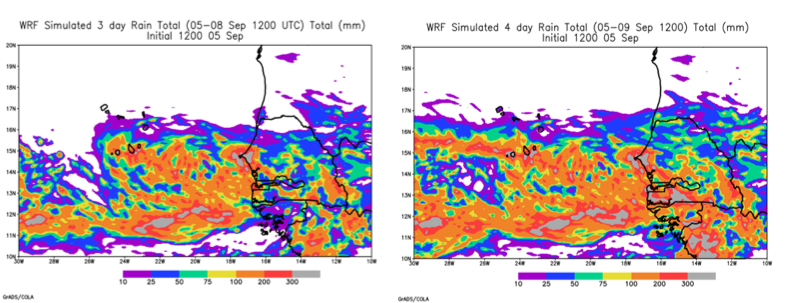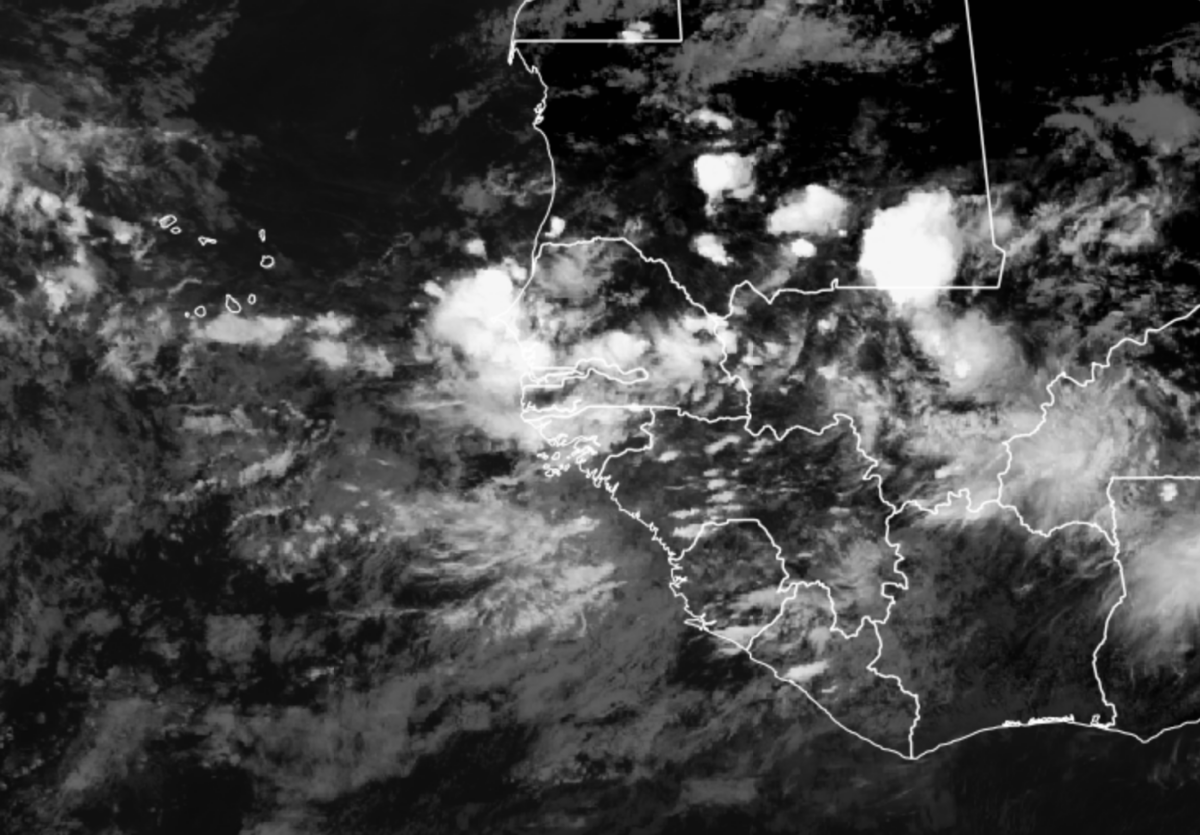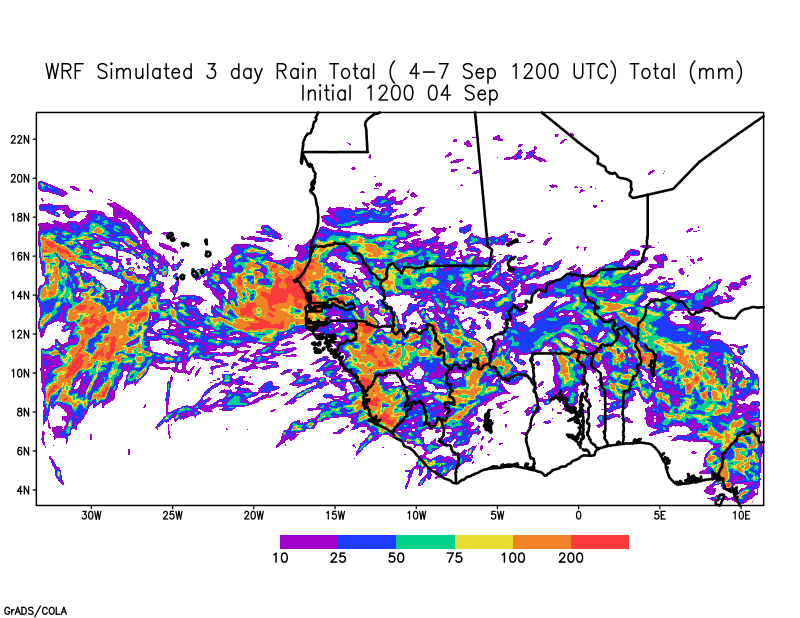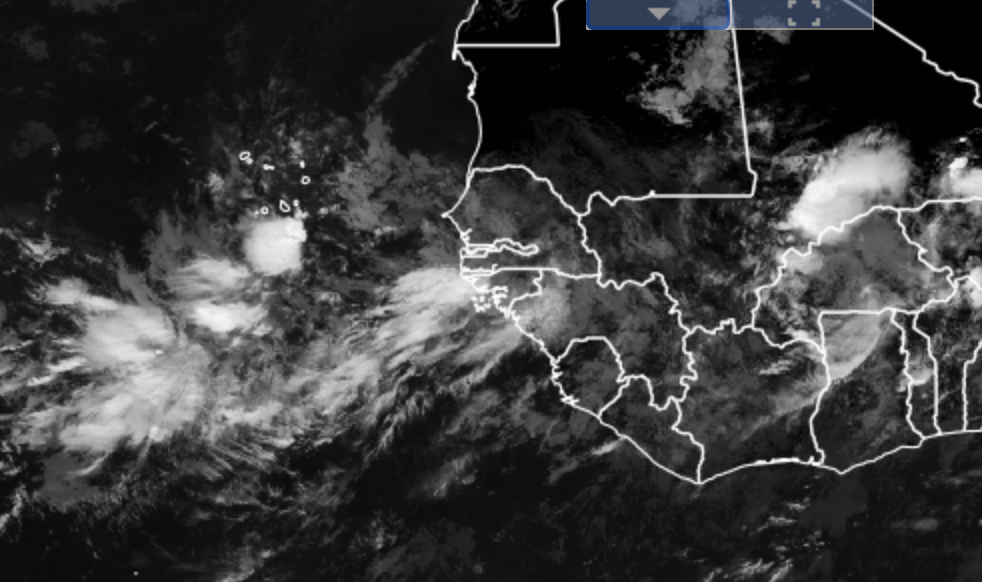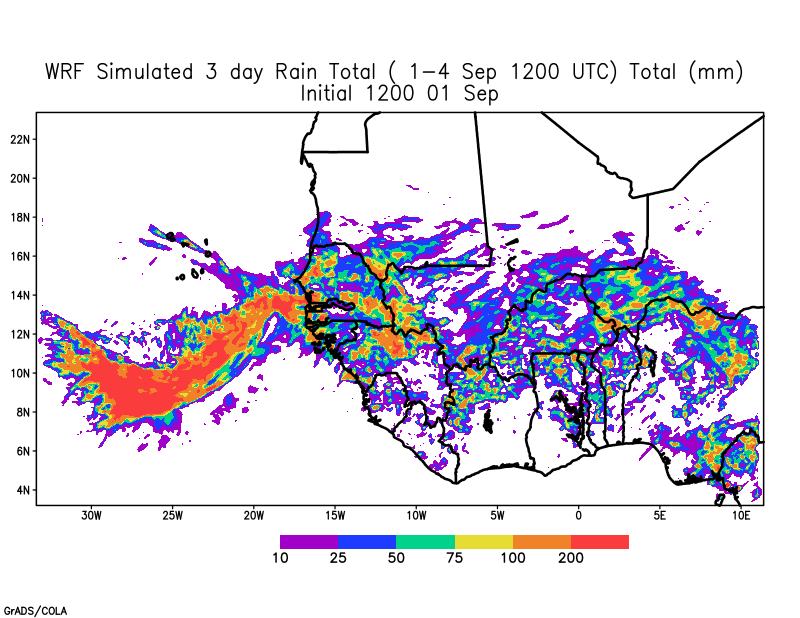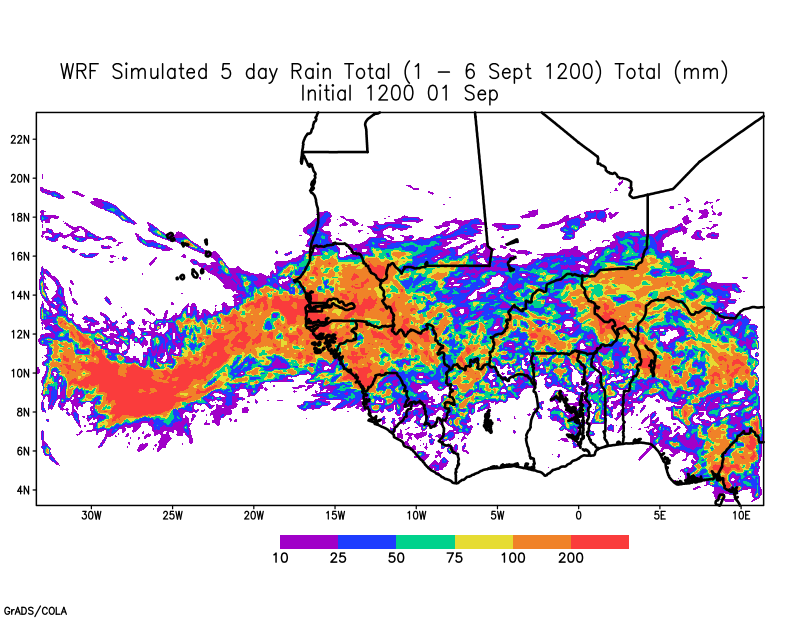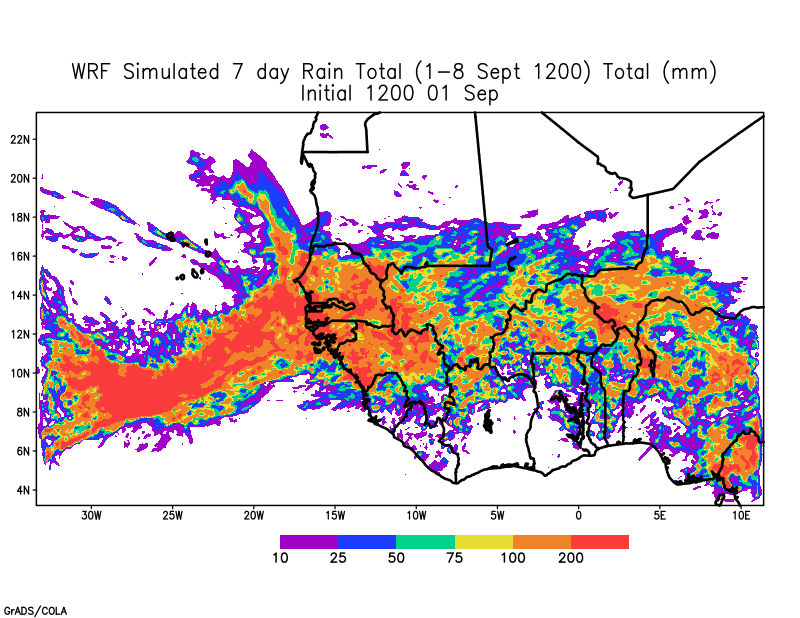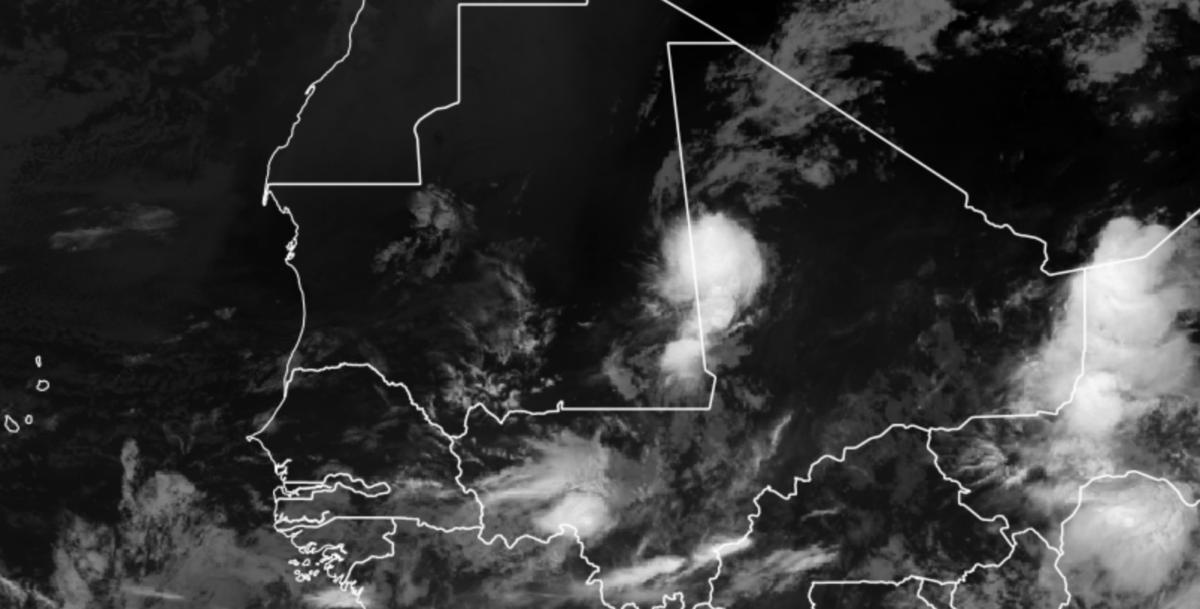This morning the latest tropical disturbance was located off the coast of West Africa, with the global model forecast showing different solutions for the future of this tropical disturbance (Caribbean path, moving northwest to open waters). The system also has significant implications for Saturday through Monday’s weather in Senegal and Cabo Verde, because a second disturbance now over Guinea is going to move towards the Northwest tomorrow bringing additional rain over Senegal and then Cabo Verde. There are a couple of items to carefully examine in next 24-36 hours.
Recent Flooding in Senegal
The past week has brought a tremendous amount of rain to Senegal because of last weekend’s storms. However, it has also rained over the past two days which doesn’t help. The ground is saturated and needs to dry out. Satellite-based rainfall shows the severity of the situation with very high rainfall amounts (4-6 inches of rain) across Senegal during the past week.
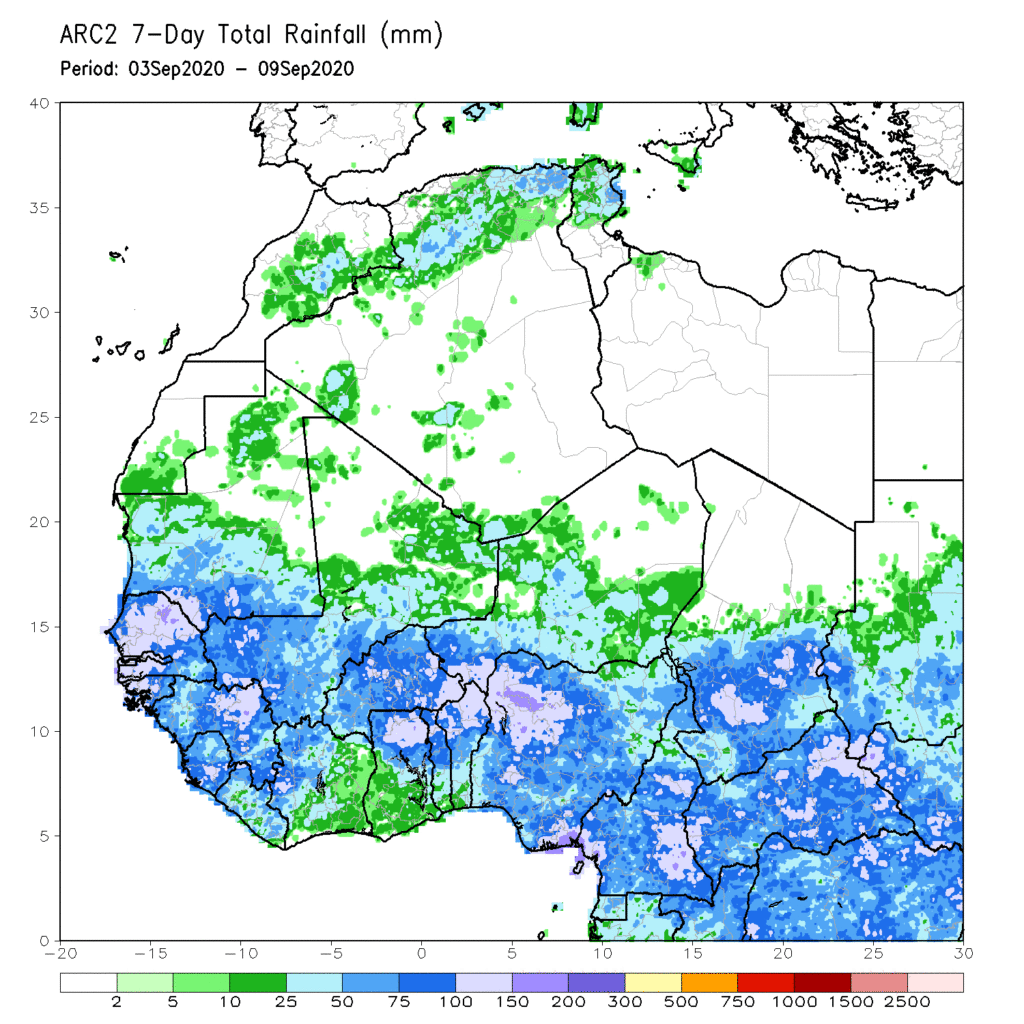
The WRF model is again forecasting relatively high rainfall amounts from Dakar and South(4-8 inches) because of a forecast squall line tomorrow and the disturbance that will move near Senegal in the next few days.
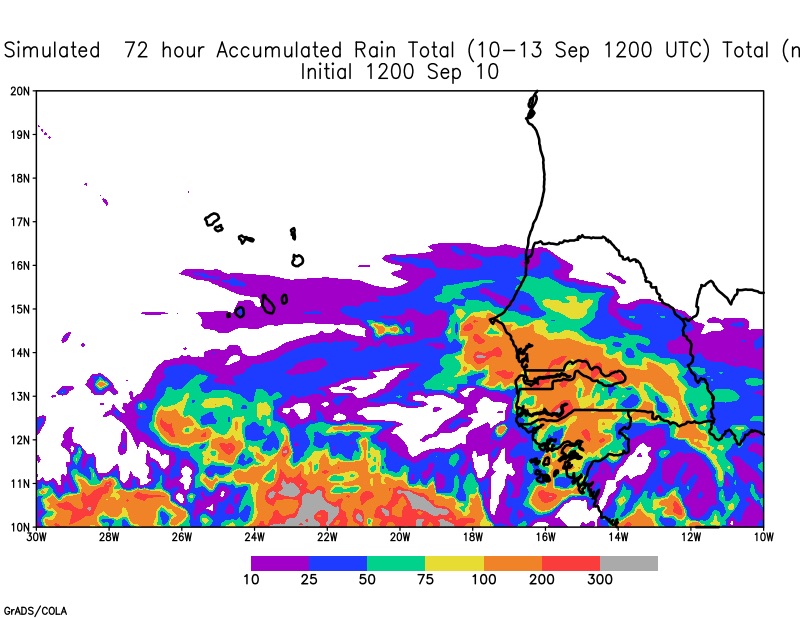
How the Low-pressure area will impact the weekend weather
If you examine the animation above there is evidence of the main area of low pressure and at the end of the forecast the second area of low pressure. While they seem independent they aren’t. In fact, this is the complicated part of the forecasts.
This is evident through examination of the 700 hPa level vorticity where you can see that the main storm and the secondary storm are interacting with each other — not exactly binary interactions but something like that. At the end of the forecast, the secondary low breaks away from the main flow.
What all of this shop talk amounts to is uncertainty. For example, Tropical Storm Paulette which may eventually impact Bermuda form from the merging of two AEWs. I see three possibilities:
1.) the wave that emerged today, absorbs the AEW off the coast of Senegal this weekend with only rain in Cabo Verde but still some rain in Senegal.
2.) The wave that emerged today, captures the AEW for part of the period and the second wave eventually breaks away –as in the WRF forecast with some rain in Senegal and Cabo Verde
3.) The wave that emerged today remains as a separate entity from the second wave. That second wave could have a stronger circulation and being rain to coastal Senegal and heavier rain to Cabo Verde.
Not easy to tell, but hopefully tomorrow we will have more insight into this situation.
Key Takeaway
- Senegal remains extremely vulnerable to additional flooding because of smaller scaled weather events and the potential for more rain tomorrow through Saturday.
- The wave that emerged today may speed across the Atlantic towards the Caribbean, stay of the ocean, or hang out for a lower period in the Eastern Atlantic.
- The Western and Central Atlantic along with the Gulf of Mexico also have tropical systems and potential disturbances. Stay alert and check in on the National Hurricane Center’s webpage
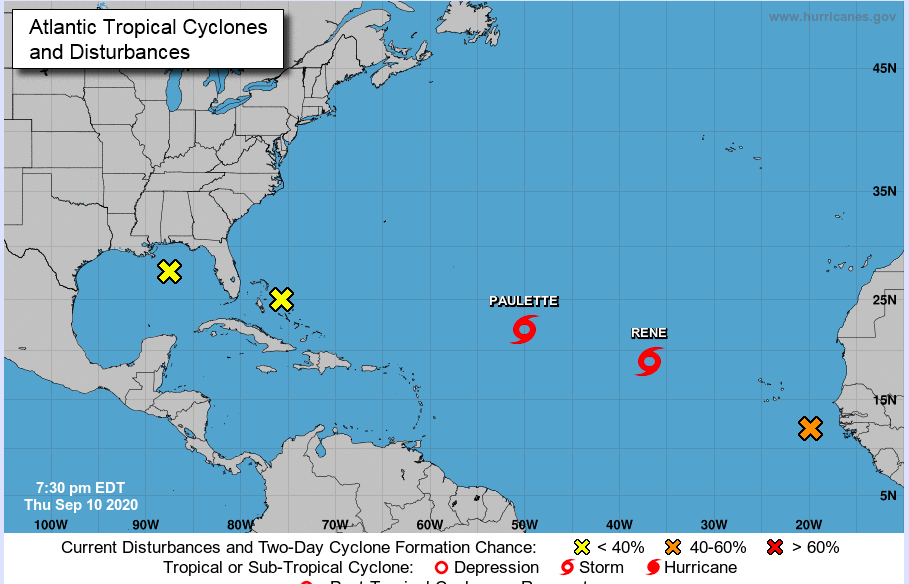
Be safe and stay cool.
